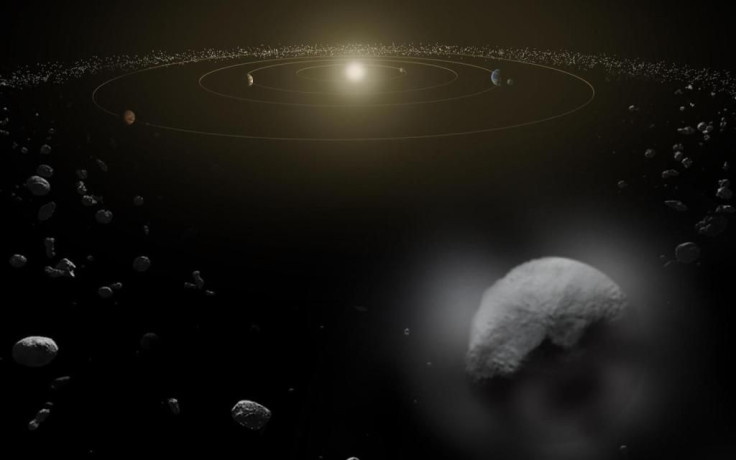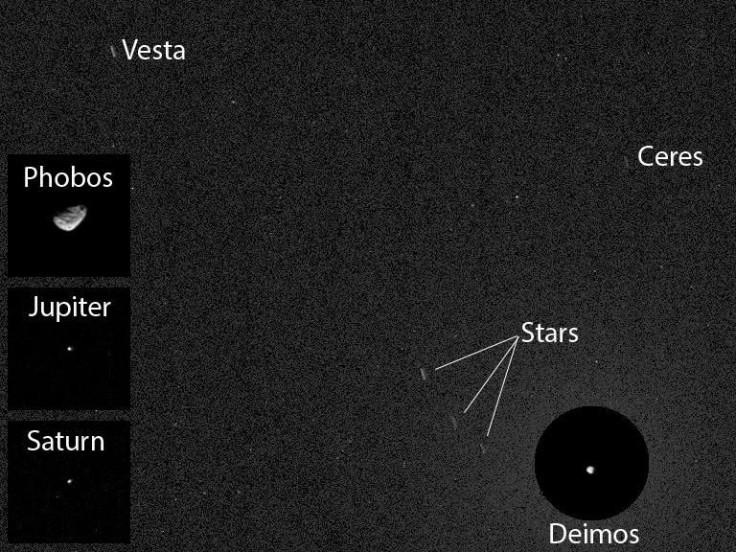NASA’s Curiosity Rover Captures First Image Of Asteroids From Mars’ Surface

NASA has revealed a new image, recorded and dispatched by its Curiosity Mars rover, which shows two asteroids as viewed for the first time from the Martian surface.
The two asteroids, named Ceres and Vesta, are the largest and third-largest bodies respectively in the asteroid belt between Mars and Jupiter. In the image, taken by Curiosity's Mast Camera on Sunday, both Ceres and Vesta appear as small, faint streaks.
“This imaging was part of an experiment checking the opacity of the atmosphere at night in Curiosity's location on Mars, where water-ice clouds and hazes develop during this season,” Mark Lemmon of Texas A&M University and a member of the camera team, said in a statement. “The two Martian moons were the main targets that night, but we chose a time when one of the moons was near Ceres and Vesta in the sky.”

The image, which also shows Deimos, one of Mars' two moons, was taken after nightfall on the 606th Martian day, or sol, of Curiosity's work on Mars. Ceres, with a diameter of about 590 miles, is large enough to be classified as a dwarf planet. Vesta, on the other hand, is about 350 miles wide.
According to NASA, the two space rocks are also the destinations of NASA’s Dawn mission, which orbited Vesta in 2011 and 2012, and is on its way to begin orbiting Ceres in 2015.
Ceres and Vesta, which are much farther from Earth's orbit, are considerably larger than the near-Earth asteroids consideration by NASA for its asteroid initiative, which includes using a robotic spacecraft to capture a small near-Earth asteroid and also remove a boulder from the surface of a larger asteroid. The initiative also involves getting the spacecraft to redirect the object into a stable orbit around the moon.
Sometime in the distant future, astronauts are expected to travel aboard NASA's Orion spacecraft to rendezvous in lunar orbit with a captured asteroid and bring back samples. NASA’s asteroid initiative also includes the “grand challenge,” whose aim is to “discover all asteroids that could threaten human populations and find out how to deal with them.”
© Copyright IBTimes 2024. All rights reserved.












